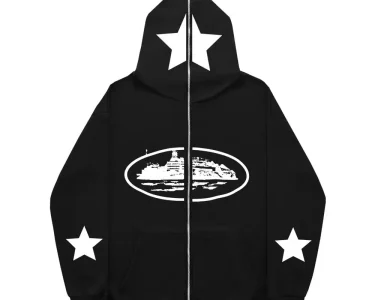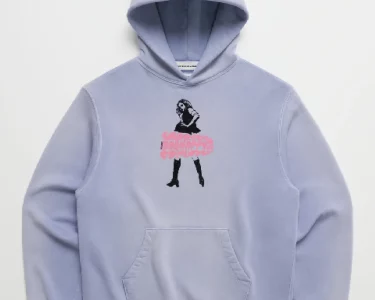Introduction
In 2025, the world is more aware than ever of the impact of our wardrobes. Fast fashion once ruled, with cheap clothes worn briefly and tossed aside. Today, sustainable fashion trends are changing how we buy, wear, and care for clothes. These new movements help reduce waste, protect workers, and lower pollution. From eco-friendly clothing made with recycled fibers to upcycled fashion that turns old pieces into fresh styles, the industry is transforming. This guide will introduce the biggest Sustainable Fashion 2025 trends, explain what they mean, and offer tips to make your closet kinder to people and the planet.
What Is Sustainable Fashion and Why Is It Important?
Sustainable fashion means making and wearing clothes in a way that protects the environment and respects people. The fashion industry is one of the largest polluters in the world. Fast fashion—cheap clothes made quickly—has caused tons of waste and water pollution.
In 2025, many people are turning to ethical fashion brands that care about how their products are made. These brands use natural or recycled fabrics, avoid harmful chemicals, and pay workers fair wages. This shift is not just good for the Earth—it also creates higher-quality clothes that last longer.
Sustainable fashion is about more than just materials. It’s about making smart choices. Buying fewer clothes, choosing timeless designs, and supporting responsible companies all make a difference. People are realizing that fashion and the environment don’t have to clash. With the right mindset, we can look good and feel good—knowing our clothes are helping, not hurting, the planet.
Recycled and Upcycled Materials Are Leading the Way
One of the biggest fashion trends in 2025 is using materials that already exist. Instead of making new fabric, many brands are turning to recycled and upcycled clothing. This means using old clothes, plastic bottles, or even fishing nets to make new outfits.
Recycled polyester, often made from plastic waste, is now used in activewear, jackets, and shoes. Denim brands are also reusing old jeans to create stylish, updated pieces. Some designers even use fabric scraps from factories that would normally be thrown away.
Upcycled fashion goes a step further. It turns unwanted clothing into fresh, one-of-a-kind styles. A worn-out dress might become a trendy top. An old bag might be covered in colorful patches. Each piece tells a story—and keeps waste out of landfills.
This trend is popular with eco-conscious shoppers who love being unique. In 2025, upcycled fashion is not only green—it’s chic and creative too.
Plant-Based and Biodegradable Fabrics Are On the Rise
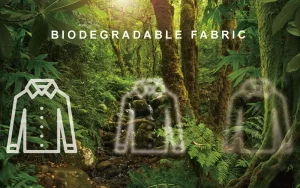
As technology improves, so do the fabrics we wear. In 2025, plant-based fabrics are changing the way clothes are made. Instead of using harmful synthetic materials, brands are turning to natural fibers that are good for both people and the planet.
These biodegradable textiles break down naturally, so they don’t sit in landfills for years. When you’re done wearing them, they return to the Earth without leaving pollution behind.
These fabrics are also comfortable, breathable, and stylish. They feel just as good as traditional materials—sometimes even better. With new designs and improved production methods, plant-based fashion is making a strong mark in 2025.
Digital Fashion and Virtual Wardrobes Are Gaining Attention

One of the newest and most exciting trends is digital fashion. Instead of buying real clothes, people can now buy clothes that exist only online. These are used in social media posts, video calls, and even gaming avatars.
In 2025, this trend is helping reduce waste. Digital clothes don’t need fabric, water, or shipping. They don’t end up in landfills. Yet they still let people express their style in creative ways. You can try on different outfits using your phone or computer, without ever needing to step into a store.
While it may sound futuristic, this trend is already becoming part of daily life. For fashion lovers and influencers, AI-powered fashion apps and digital styling tools are exciting ways to stay trendy and eco-friendly at the same time.
Clothing Rental and Subscription Services Are Growing Fast
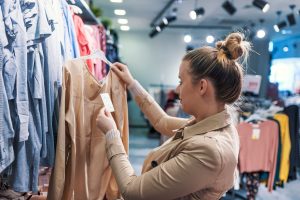
Why buy clothes you only wear once? In 2025, many people are choosing to rent clothing or join fashion subscription boxes. This allows them to enjoy new styles without filling their closets—or hurting the planet.
Rental services offer designer pieces for a few days or weeks. After you wear them, you return them to be cleaned and reused by someone else. This works great for weddings, work events, or special nights out.
These services are supported by green cleaning systems and responsible delivery options. They make fashion fun, affordable, and more sustainable than buying new items all the time.
Eco-Friendly Fashion Brands Are Leading by Example
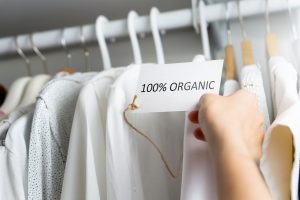
More brands are proving that fashion can be beautiful and responsible at the same time. In 2025, eco-friendly fashion labels are gaining loyal fans by doing things the right way—from production to packaging.
Brands like Reformation, Pact, and Stella McCartney are known for their commitment to clean production, safe labor, and ethical sourcing. Newer brands are also entering the scene with fresh ideas like zero-waste patterns, recycled packaging, and plant-based dyes.
These brands are transparent. They tell customers where clothes come from and how they’re made. Many include carbon footprint reports, giving shoppers a clear look at the item’s environmental impact.
Consumers now want more than just a pretty outfit. They want purpose. And these fashion brands are showing that style and values can go hand in hand.
Vegan and Cruelty-Free Fashion
As more people become aware of the impact of the fashion industry on animals, vegan fashion will continue to grow in 2025. Vegan fashion means no animals are harmed in making clothes, shoes, or accessories.
- Vegan Leather: Materials like apple leather and cactus leather are becoming popular alternatives to traditional animal leather. These materials are not only eco-friendly but also cruelty-free.
- Ethical Materials: Many brands are now using materials like plant-based fabrics and recycled synthetics instead of animal-based products. This is good news for both animals and the environment.
Why It’s Important: Vegan and cruelty-free fashion helps protect animals and reduces the carbon footprint of the fashion industry.
Slow Fashion Movement
The slow fashion movement is all about creating high-quality clothing that lasts longer. Unlike fast fashion, which focuses on producing large quantities of cheap, disposable clothes, slow fashion encourages quality over quantity.
- Timeless Styles: Instead of following fleeting trends, slow fashion focuses on classic, timeless pieces that can be worn year after year.
- Durable Clothing: Slow fashion brands are known for using high-quality materials that last longer, meaning consumers won’t need to buy clothes as often. This reduces waste and the overall environmental impact of clothing production.
- Ethical Practices: Brands that embrace slow fashion are also committed to ethical production, ensuring that workers are paid fairly and work in safe conditions.
Why It’s Important: Slow fashion helps reduce the environmental impact of clothing production by focusing on durable, long-lasting pieces rather than short-lived trends.
Table: Sustainable Fashion Trends to Watch in 2025
| Trend | What It Is | Why It Matters |
|---|---|---|
| Recycled and Upcycled Fashion | Turning old materials into new clothes | Cuts waste and pollution |
| Plant-Based and Biodegradable Fabrics | Using materials like hemp, bamboo, mushrooms | Natural, renewable, and eco-friendly |
| Digital Fashion & Virtual Wardrobes | Virtual outfits and wardrobe apps | Reduces physical waste and increases creativity |
| Clothing Rental & Subscription | Borrowing clothes instead of buying | Saves money and lowers clothing waste |
| Eco-Conscious Brands | Labels focused on sustainability and ethics | Builds trust and supports green practices |
How to Embrace Sustainable Fashion Trends
Start by auditing your closet. Donate or swap items you no longer wear. Next, set a budget for one or two key pieces each season. Choose eco-friendly clothing with clear material origins and fair-trade labels. Try a clothing rental service for special events. When shopping, look for brands that offer take-back or recycling programs. Explore secondhand stores and online resale platforms for upcycled fashion treasures. Finally, care for your clothes: wash less, air dry, and mend small tears. These small steps add up to a big difference.
Conclusion
In 2025, sustainable fashion is no longer a niche—it’s the future. From Recycled Materials and plant-based fabrics to digital wardrobes and rental services, these trends are changing how we shop and dress. They help us care for the planet while expressing our personal style. Fashion is still fun, bold, and beautiful—but now it’s also thoughtful and smart.
Call-to-Action (CTA)
Are you ready to update your wardrobe the sustainable way? Explore eco-friendly brands, try renting instead of buying, or switch to plant-based fabrics. Share this article with your fashion-forward friends, and help spread the message that green is the new black. Let’s dress better—for ourselves and for the planet.


